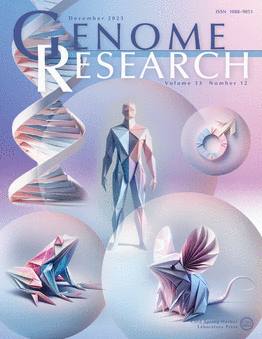Batch correction methods used in single-cell RNA sequencing analyses are often poorly calibrated
IF 5.5
2区 生物学
Q1 BIOCHEMISTRY & MOLECULAR BIOLOGY
引用次数: 0
Abstract
As the number of experiments that employ single-cell RNA sequencing (scRNA-seq) grows, it opens up the possibility of combining results across experiments or processing cells from the same experiment assayed in separate sequencing runs. The gain in the number of cells that can be compared comes at the cost of batch effects that may be present. Several methods have been proposed to combat this for scRNA-seq data sets. We compare eight widely used methods used for batch correction of scRNA-seq data sets. We present a novel approach to measure the degree to which the methods alter the data in the process of batch correction, both at the fine scale, comparing distances between cells, as well as measuring effects observed across clusters of cells. We demonstrate that many of the published methods are poorly calibrated in the sense that the process of correction creates measurable artifacts in the data. In particular, MNN, SCVI, and LIGER perform poorly in our tests, often altering the data considerably. Batch correction with Combat, ComBat-seq, BBKNN, and Seurat introduces artifacts that could be detected in our setup. However, we find that Harmony is the only method that consistently performs well in all the testing methodology we present. Therefore, Harmony is the only method we recommend using when performing batch correction of scRNA-seq data.单细胞RNA测序分析中使用的批量校正方法往往校准不良
随着使用单细胞RNA测序(scRNA-seq)的实验数量的增加,它开辟了将不同实验的结果结合起来的可能性,或者在不同的测序运行中处理来自同一实验的细胞。可以比较的细胞数量的增加是以可能存在的批处理效应为代价的。已经提出了几种方法来解决scRNA-seq数据集的问题。我们比较了8种广泛用于批量校正scRNA-seq数据集的方法。我们提出了一种新的方法来测量这些方法在批量校正过程中改变数据的程度,无论是在精细尺度上,比较细胞之间的距离,还是测量在细胞簇上观察到的效果。我们证明了许多已发表的方法在校正过程中会在数据中产生可测量的伪影的意义上校准得很差。特别是,MNN、SCVI和LIGER在我们的测试中表现不佳,经常会大大改变数据。使用Combat, Combat -seq, BBKNN和Seurat进行批量校正引入了可以在我们的设置中检测到的工件。然而,我们发现Harmony是唯一在我们提出的所有测试方法中始终表现良好的方法。因此,Harmony是我们在对scRNA-seq数据进行批量校正时推荐使用的唯一方法。
本文章由计算机程序翻译,如有差异,请以英文原文为准。
求助全文
约1分钟内获得全文
求助全文
来源期刊

Genome research
生物-生化与分子生物学
CiteScore
12.40
自引率
1.40%
发文量
140
审稿时长
6 months
期刊介绍:
Launched in 1995, Genome Research is an international, continuously published, peer-reviewed journal that focuses on research that provides novel insights into the genome biology of all organisms, including advances in genomic medicine.
Among the topics considered by the journal are genome structure and function, comparative genomics, molecular evolution, genome-scale quantitative and population genetics, proteomics, epigenomics, and systems biology. The journal also features exciting gene discoveries and reports of cutting-edge computational biology and high-throughput methodologies.
New data in these areas are published as research papers, or methods and resource reports that provide novel information on technologies or tools that will be of interest to a broad readership. Complete data sets are presented electronically on the journal''s web site where appropriate. The journal also provides Reviews, Perspectives, and Insight/Outlook articles, which present commentary on the latest advances published both here and elsewhere, placing such progress in its broader biological context.
 求助内容:
求助内容: 应助结果提醒方式:
应助结果提醒方式:


